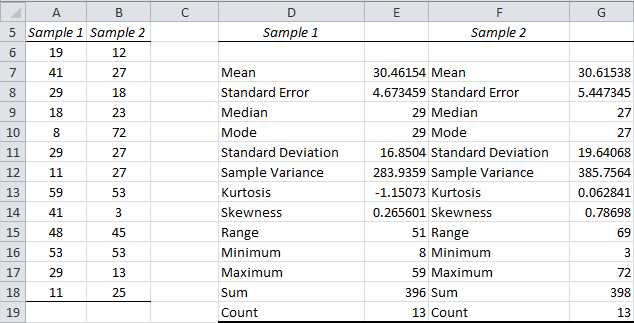

We can use statistics related to the normal curve to calculate how we might expect bins to behave given the median and standard deviation of our sample. That information is housed in the data table Excel (Sheet 2) creates to make the histogram (refer blue histogram image above) The Expected Bins Having created a histogram via the Analysis ToolPak, you already have access to the observed bin distribution. In this case, it is the size of the p-Value that lets us decide whether to accept or reject the hypothesis that the data is normal.įor the purpose of the Chi-Squared Goodness-of-Fit test in this situation, if the p-Value is greater than 0.05, we will accept the null hypothesis that the data is normally distributed. That number then lets us calculate a p-Value. Using the actual number of samples in each bin and the expected number of samples, we can calculate what is called the Chi-Square Statistic in Excel. Understand the Chi-Squared Goodness-of-Fit test premise.īasically, the Chi-Squared Goodness-of-Fit test takes the number of samples in each bin on the histogram and compares that to the number of samples you might expect to find in each bin given a normal curve. If we reject the null, we accept the alternative. In statistical terms, we talk in terms of accepting or rejecting the null hypothesis.

The sample size is the number of items in the data set, which was 50 for this example. The information provided are slightly similar to information in Minitab Graphical Summaryįor the Chi-Squared Goodness-of-Fit test, you will need to note the sample size (or count), the same standard deviation, and the sample mean.

#Descriptive analysis in excel for mac software
Most us are relying to our advance statistical software such as Minitab, SigmaXL, JMP and many more to validate the data normality. However, deeper analysis is require to validate the normality of the data since it is affecting our analysis method.
#Descriptive analysis in excel for mac how to
In our previous post, we have discussed what is normal distribution and how to visually identify the normal distribution.


 0 kommentar(er)
0 kommentar(er)
